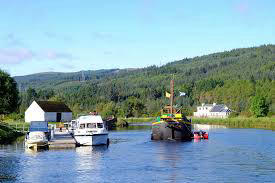
A recent survey found that nearly half of all land in Scotland is privately owned. It is estimated that around 70,000 ha of this is held by 87 private owners, but the actual figure is higher. For example, the Duke of Buccleuch owns around 200,000 acres. There are also several million acres held by a single Danish billionaire, Anders Holch Povlsen. In contrast, only one private company owns more than one million acres of land in Scotland.
The largest private landowners in Scotland are community organizations. These organizations own a combined total of almost 100,000 ha. In other words, they own a little over 1% of Scotland’s land area. The rest of the country is owned by individuals and businesses. This means that about half of all Scottish land is privately owned. However, the rest is owned by individuals, corporations, or the state. The vast majority of the land is privately held by private companies.
Although the government’s figures for land ownership are incomplete, there are several ways to determine how much land is privately owned in Scotland. The government believes that 57% of Scotland’s rural land is owned by public bodies. Meanwhile, the SLE believes that twenty-five percent of rural land is owned by smaller estates. A few other small estates and charities are also thought to own less than 1% of the countryside. In addition, community-owned land represents about three percent of the rural population.

The Scottish Government is trying to make Scotland’s land ownership transparent. They are aiming to do this by creating a public register of all land that is owned by private entities. The register will only be useful if it can provide the correct order of magnitude. The research aims to answer this question. If the government is willing to do that, it should be a good start. So, what can we do?
Historically, local authorities were the main landowners. Deans of Guild and town councils, which were the largest local authorities, often held large areas of land with high value. By contrast, there is only one county in Scotland that has more than 5,000 privately owned acres. The rest of the country is still owned by small and medium-sized companies. In this case, the proportion of publicly owned land is a bit higher than in most of the countries.
In addition to the eight large estates, the Green party candidate, Andy Wightman, has a large portion of land in Scotland that is owned by a single owner. A similar percentage of the land is held by a small number of individuals and has no public ownership. In fact, a third of Scotland’s private land is held by fewer than four hundred individual owners. Moreover, the vast majority of Scotland’s privately owned land is privately owned by a dozen environmental organizations.
The Scottish government has argued that the private land market in Scotland is too free and too concentrated. In addition, only 16 people hold a quarter of the country’s private land. As a result, the number of large estates in Scotland is still relatively low. In addition, the Scottish government says that the size of the lands in the UK is growing rapidly. A third of the population lives within 500 meters of these large sites.
In Scotland, about half of the land is privately owned, while another third is in the hands of a few hundred people. Even the largest estates, such as the Cairngorms and the Western Isles, have little public ownership. By contrast, fewer than a hundred individuals own half of Scotland’s land. Furthermore, a handful of landowners own over 50% of the country. The rest is owned by a few hundred people.
In Scotland, more than half of the land is owned by a single person. In fact, the number of privately owned properties in the country is higher than in the United States. The new lairds are mostly absentees. The majority of lairds are self-made continental millionaires and have built luxurious homes in the region. Despite this, many of the lairds are absentees, and environmentalists claim that these absentee owners do not care about the land in the country.

